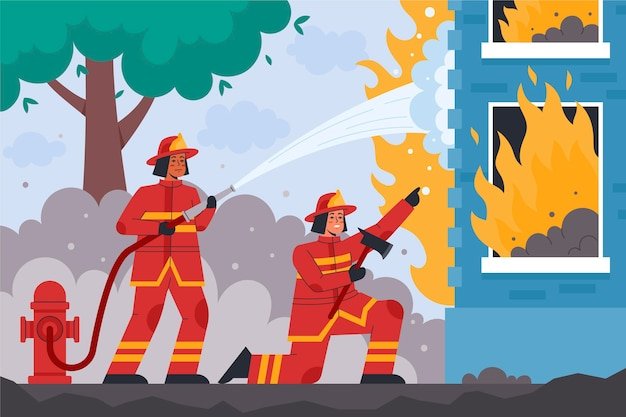For decades, firefighters have relied on a firefighting foam called AFFF to combat dangerous, flammable liquid fires. AFFF stands for Aqueous Film-Forming Foam, and it’s been a hero in extinguishing these types of fires.
Recently, however, AFFF firefighting foam lawsuits have started to pop up across the country.
What’s behind this sudden surge in lawsuits? And what are the allegations against AFFF and its manufacturers?
This article will provide an overview of AFFF firefighting foam, the potential dangers associated with it, and the current legal landscape surrounding these lawsuits. Let’s dive in.
What is the AFFF Firefighting Foam?
AFFF is a foam concentrate used to extinguish fires involving flammable liquids such as gasoline, oil, and jet fuel. It works by forming a thin film on top of the liquid, preventing oxygen from reaching the fire and suffocating it.
Traditionally, AFFF contained perfluoroalkyl and polyfluoroalkyl substances (PFAS), which are highly effective in fighting fires. However, these chemicals have since been linked to health issues and environmental concerns. As a result, many countries have banned the production and use of AFFF containing PFAS.
The Dark Side of AFFF: PFAS Chemicals
Per- and poly-fluoroalkyl substances (PFAS) have been key components of AFFF, making the foam incredibly effective at combating flammable liquid fires. However, these “forever chemicals” are known for their persistence in the environment. Here’s why PFAS chemicals are cause for concern:
- Persistence: PFAS do not break down easily in the environment, leading to long-term contamination.
- Health Risks: Exposure to PFAS has been linked to various health issues, including:
- Cancer
- Thyroid hormone disruption
- Liver damage
- Immune system effects
- Water Contamination: PFAS have contaminated water sources in numerous communities, impacting drinking water and posing a risk to public health.
The lasting presence of PFAS in the environment and their potential to cause serious health issues are at the center of the growing controversy and litigation surrounding AFFF firefighting foam. For this reason, those who have suffered severe health impacts can consider opting for legal recourse. This can include looking for details on a pfas exposure compensation estimate, for instance, to find a considerable way forward.
AFFF Lawsuits: The Allegations
The primary allegation in AFFF lawsuits is that manufacturers knew about the dangers of PFAS chemicals in their products but failed to warn consumers or take action to prevent harm. The following are common allegations made by plaintiffs in these lawsuits:
- Negligence: Manufacturers were negligent in designing, producing, and selling AFFF-containing PFAS.
- Failure to Warn: Manufacturers did not adequately warn firefighters and other users about the potential risks associated with using AFFF.
- Product Liability: AFFF was defectively designed, making it unreasonably dangerous for its intended use.
As more research is conducted and information about the potential dangers of PFAS becomes available, it’s likely that more allegations will arise in these lawsuits.
The Legal Landscape: Where Do We Stand?
Currently, there are multiple ongoing AFFF lawsuits across the United States. In addition to individual lawsuits, there have been mass torts and class action lawsuits filed against manufacturers for their role in producing and distributing AFFF-containing PFAS.
Mass torts involve a group of individuals filing separate lawsuits with similar claims against a common defendant, while class actions involve a larger group of individuals with similar claims being represented collectively in one lawsuit.
As the number of AFFF lawsuits continues to grow, it’s clear that this issue is not going away anytime soon. The legal landscape surrounding these lawsuits will likely continue to evolve as more studies are conducted and more evidence comes to light regarding the dangers of PFAS chemicals.

Questions and Uncertainties
There are still many unanswered questions and uncertainties surrounding AFFF firefighting foam lawsuits. Some key issues include:
- Liability: Who is ultimately responsible for the harm caused by AFFF containing PFAS? Is it the manufacturers, government agencies, or firefighters who used the foam?
- Compensation: How much compensation should be awarded to victims of AFFF exposure? Will there be a settlement fund established for affected individuals and communities?
- Regulations: What impact will these lawsuits have on regulations surrounding PFAS chemicals and their use in products like AFFF?
As more information becomes available and legal battles continue, we may start to see answers to these questions. In the meantime, it’s important for those potentially affected by AFFF exposure to stay informed about developments in these lawsuits.
If you or a loved one has been exposed to AFFF and believe it has caused harm, it may be worth speaking to a lawyer. They can provide guidance and support on potential legal options for seeking compensation for damages.












